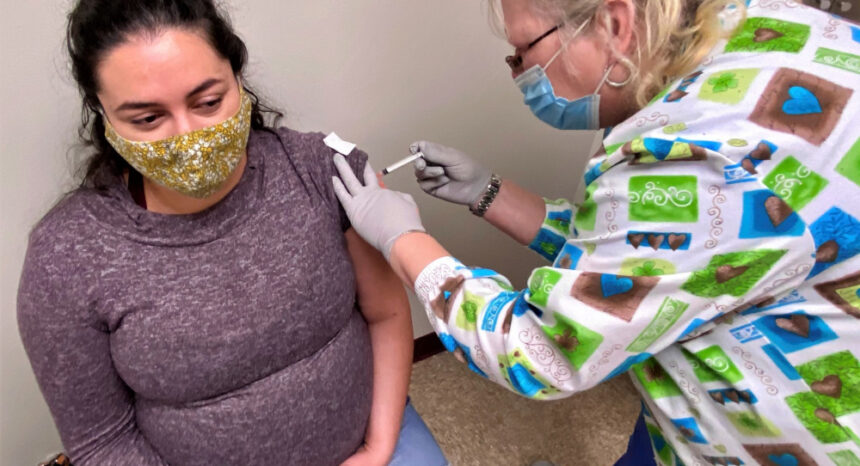Report 80: Moderna mRNA COVID-19 Injection Damaged Mammals’ Reproduction: 22% Fewer Pregnancies; Skeletal Malformations, Pain, Nursing Problems in Pups. FDA Knew, Yet Granted EUA.

Based on “A GLP intramuscular combined developmental and perinatal/postnatal reproductive toxicity study of mRNA-1273 in rats. FDA-CBER-2-22-4207-0015,” Moderna’s COVID-19 mRNA drug damaged the reproductive systems of female rats their estrous cycles (the recurring period of sexual receptivity and fertility in many female mammals) were disturbed, they were less likely to mate, and they were even less likely to get pregnant. When the mRNA-injected rats did get pregnant, their fetuses and live-born pups suffered malformations and distress. The results of Moderna’s study on rats do not bode well for human reproduction.
About Rat Models
Moderna researchers used Sprague Dawley rats in their study. This rat model is commonly used to determine how a drug affects reproduction and development. In Moderna’s study, injected female rats were mated with male rats who apparently were not injected.
According to Taconic Biosciences, a provider of Sprague Dawley rats, “the female rat accepts the male for mating only at the end of the 12-hour preliminary period of proestrus, and during the 12 hours of estrus. Ovulation occurs about 10 hours after the onset of estrus. Sperm migrate from the uterus to the oviduct about 15 minutes after copulation. At 1 hour post-copulation, sperm are found throughout the oviduct at 3 hours, 90% of the ova are fertilized” (p. 7). Researchers often determine if the female rat is in estrus by observing the appearance of the vagina or by taking a vaginal swab (Ajayi and Akhigbe 2022).
Similarly, researchers typically know if a female rat has mated by taking vaginal swabs and looking for sperm. By the thirteenth day after mating, a pregnant rat’s abdomen begins to grow larger. This is followed the next day by mammary development, nipple enlargement, and increased eating and weight gain (Ypsilantis et al. 2009).
For rats that are indeed pregnant, their fetuses begin to develop organs about nine to 10 days into gestation. Fetuses develop bones and joints in the following few days. Normal gestation lasts about 21 to 23 days. An average litter consists of about 10 rat pups. (Taconic Biosciences)
Rat pups begin walking, using their forelimbs, and grooming themselves at about 10 to 20 days (Smirnov and Sitnikova 2019). Male rats are typically sexually mature at 40 to 60 days old (Fuochi et al. 2022); female rats experience proestrus at about 38 days old (Ajayi and Akhigbe 2020).
Moderna’s Research on Developmental and Reproductive Toxicity
On June 16, 2020, Moderna began experiments on Sprague Dawley rats to find out whether Moderna’s COVID-19 mRNA shot was toxic to pregnant females and their offspring (Moderna 2020). Researchers injected 44 female rats with mRNA-1273 (the experimental group) and 44 female rats with a buffer solution (the control group). Each rat got four doses: 28 days and 14 days before they mated, then 1 day and 13 days after they mated with male rats (who apparently were not injected).
When Moderna’s female rats received their last injection 13 days after mating, they were likely just barely or not yet showing if they were pregnant. At this point, each group was divided equally into two subgroups. Half the experimental group (22 rats) and half the control group (22 rats) were sacrificed 21 days after they mated (at the end of the normal gestation period), and their fetuses were removed by Caesarean section. The other half (22 rats in each group) were allowed to deliver their pups naturally, then sacrificed along with their pups 21 days after birth (after the normal pup development period).
Developmental and Reproductive Toxicity Results
According to Moderna researchers, the mRNA-1273 shot “did not have any adverse effects on the F0 [injected females] or F1 [their offspring] generations” (Moderna 2020, p. 43). But the data in their report tell a different story.
Adverse effects in the rats who got the mRNA-1273 shot included thinning fur, swollen and partially paralyzed hind legs, weight gain, and abnormal eating patterns (Moderna 2020, pp. 37-38). Perhaps most alarming, the “mean number of [estrous] cycle lengths was statistically significantly higher” (longer) in mRNA-injected females than in the control group, meaning that the drug affected their reproductive systems (Moderna 2020, p. 38; Table 13, p. 67).
More evidence of reproductive harms to these rats is found in Table 14 (Moderna 2020, p. 68). Here the data show that only 39 of the 44 mRNA-injected females (88.6%) successfully mated, as compared to 42 of the 44 control group females (95.5%). This is a 7% decrease in mating in the experimental group; but, because the sample size is small, the difference is not statistically significant.
Pregnancy data, too, suggest harms to the rats’ reproductive systems (Moderna 2020, p. 38). Only 37 of the 44 mRNA-injected females (84.1%) got pregnant, as compared to 41 out of 44 control group females (93.2%). That is a 9% decrease in pregnancies in the females who got the mRNA shot; but again, because the sample size is small, the difference is not statistically significant.
The data are even more discrepant in the rats that were designated for natural delivery. Recall that 22 control and 22 experimental rats were chosen, likely before researchers could tell if they were pregnant, to deliver their pups naturally. Just 15 of the 22 mRNA-injected females (68.2%) got pregnant and delivered their pups naturally, as compared to 20 out of 22 control group females (90.9%). This appears to be an alarming 22.7% decrease in pregnancies in the natural delivery, mRNA-injected female rats (Moderna 2020, Table 24, p. 103). In this analysis, the sample size of each group is even smaller; so, once again, the difference is not statistically significant.
The offspring, as fetuses (sacrificed by Caesarean section 21 days after their mothers mated) and as live-born pups, were affected by the mRNA shot as well. In both, Moderna researchers reported malformed bones: “mRNA-1273-related common skeletal variations consisting of wavy ribs and increased nodules were observed . . . the fetal and litter incidence of wavy ribs exceeded the range observed historically . . .” (Moderna 2020, p. 16). These skeletal malformations (wavy ribs) may suggest that vital serum proteins are not getting to the fetus (Kast 1994).
In the live-born pups, some whose mothers got the mRNA shot showed signs of pain (ungroomed fur is an indicator of pain in research rats; Carstens and Moberg 2000) and some had kidney abnormalities (renal papilla) (Moderna 2020, p. 41). Inexplicably, researchers noted that these pups had “statistically significant increases in mean pup body weights,” while some were starving (no milk band present, meaning they were not getting milk through nursing; Moderna 2020, p. 41). In spite of these findings, the report declares that “there were no mRNA-1273-related effects on any natural delivery or litter observation parameters” (Moderna 2020, p. 40).
Alternate Conclusions
Clearly, Moderna’s rat study showed that the mRNA-1273 shot had toxic effects on the female rats’ reproductive systems and on their offspring. Unfortunately, Moderna researchers used too few rats in their study, limiting our ability (deliberately?) to use statistics to draw definitive conclusions.
Further, the study was criticized by the European Medicines Agency (EMA) because “no vaccine dose was administered during the early organogenesis, to address the direct embryotoxic effect of the components of the vaccine formulation” (European Medicines Agency 2021, p. 51). By not giving the mRNA shot throughout the female rats’ pregnancies, Moderna researchers missed (deliberately?) an important opportunity to determine the drug’s toxic effects on offspring.
The Moderna rat study ended on September 14, 2020. The US Food and Drug Administration (FDA) had the study and its alarming results in December 2020 when it approved the Moderna mRNA-1273 shot for emergency use in humans. (https://www.nih.gov/news-events/news-releases/statement-nih-barda-fda-emergency-use-authorization-moderna-covid-19-vaccine) Thus, Moderna and United States government agencies have known for years that mRNA-1273 is toxic to pregnant females and their babies, yet they continue to this day to recommend the shot to women “who are pregnant, breastfeeding, trying to get pregnant now, or those who might become pregnant in the future” (US Centers for Disease Control and Prevention).
When will the FDA alert the world to the fact that Moderna’s mRNA-1273 shot is dangerous to pregnant women and their babies?
References
Ajayi AF, Akhigbe RE. 2020. Staging of the estrous cycle and induction of estrus in experimental rodents: an update. Fertility Research and Practice, 6:5. https://doi.org/10.1186%2Fs40738-020-00074-3
Carstens E, Moberg GP. 2000. Recognizing pain and distress in laboratory animals. ILAR Journal, 41:2; 62–71. https://doi.org/10.1093/ilar.41.2.6
European Medicines Agency. 2021. Assessment report: COVID-19 vaccine Moderna. EMA/15689/2021, correction 1. https://www.ema.europa.eu/en/documents/assessment-report/spikevax-previously-covid-19-vaccine-moderna-epar-public-assessment-report_en.pdf
Fuochi S, et al. 2022. Puberty onset curve in CD (Sprague Dawley) and Long Evans outbred male rats. Laboratory Animals, 56:5; 471–475. https://doi.org/10.1177/00236772221078725
Kast A. 1994. “Wavy ribs” A reversible pathologic finding in rat fetuses. Experimental and Toxicologic Pathology. 46:3; 203–210. https://doi.org/10.1016/S0940-2993(11)80082-5
Moderna. 2020. A GLP intramuscular combined developmental and perinatal/postnatal reproductive toxicity study of mRNA-1273 in rats. FDA-CBER-2-22-4207-0015. https://defendingtherepublic.org/wp-content/uploads/2023/07/6_Moderna-Study-A-GLP-Intramuscular-Combined-Developmental-and-PerinatalPostnatal-Reproductive-Toxicity-Study-of-mRNA-1273-in-Rats-814-pages.pdf
Smirnov K, Sitnikova E. 2019. Developmental milestones and behavior of infant rats: the role of sensory input from whiskers. Behavioral Brain Research, 374; 112143. https://doi.org/10.1016/j.bbr.2019.112143
Taconic Biosciences. Sprague Dawley rat. https://www.taconic.com/pdfs/sprague-dawley-rat.pdf
US Centers for Disease Control and Prevention. Safety and effectiveness of COVID-19 vaccination during pregnancy. https://www.cdc.gov/coronavirus/2019-ncov/vaccines/recommendations/pregnancy.html#anchor_1628692520287
Ypsilantis P., et al. 2009. Ultrasonographic diagnosis of pregnancy in rats. Journal of the American Association for Laboratory Animal Science, 48:6; 734–739. https://www.ncbi.nlm.nih.gov/pmc/articles/PMC2786927/




How dare they.
I just worked with someone who told me she took the jab under duress, threatened with termination. She looked me in the face and said, “I’m 45 years old. I took the jab 18 months ago and have never had another menstrual cycle. My doctor doesn’t know why.”